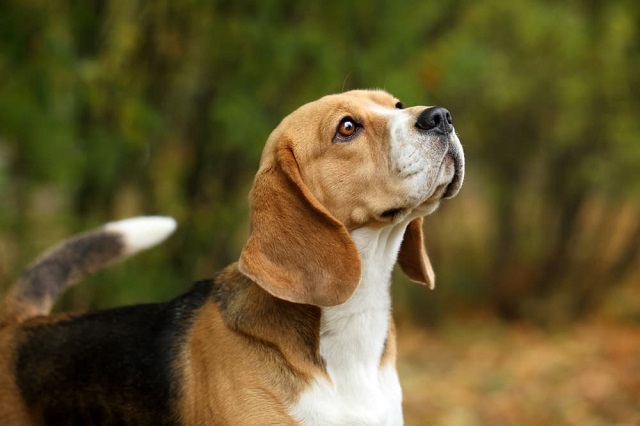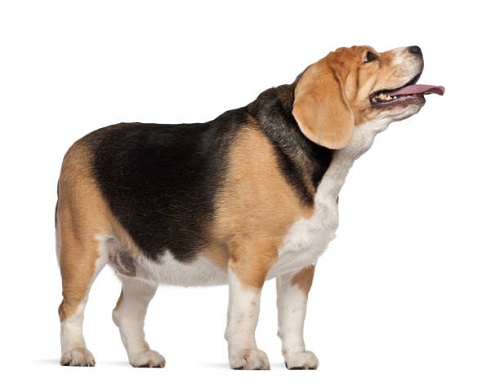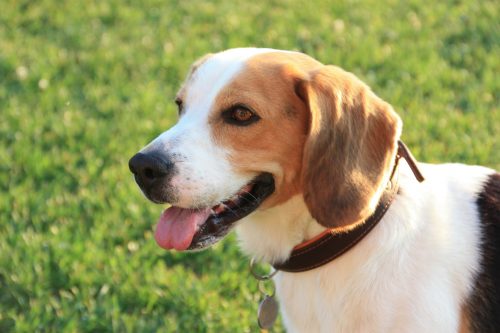Have you ever heard of reverse sneezing? This phenomenon, as curious as it may be, is quite common in dogs and sometimes even cats. In fact, many dog owners have observed it in their canine companions without knowing what it was.
For people who do not know about reverse sneezing in dogs, its manifestation can be scary because they do not understand what is happening to their dog and may even think that the dog is drowning.
Is reverse sneezing in dogs dangerous? How and why does it manifest? How can I help my dog if it suffers from a reverse sneeze? All these questions will be answered in this post.
How and why does reverse sneezing manifest?
The normal sneeze consists of a strong exhalation of air (passes from the inside to the outside of the body) through the airways, however for the reverse sneeze, as its name indicates, it is the opposite. Instead of going out, the air enters the body with force through great inhalations, followed and, in many cases, compulsive. Reverse sneezing can occur in all dogs, but certain breeds are more prone, as is the case of the boxer, pug, French bulldog, Boston terrier, English bulldog, etc. Among these breeds, the smallest are affected the most, as they have a smaller windpipe and throat.
Here a video of a French bulldog in full attack.
When a reverse sneeze occurs, it is because the dog spasms its throat and soft palate and begins to suck in air. In addition to noise, the physical posture dogs adopt when they have reverse sneezes is quite surprising. They tend to stop with their elbows apart, lower their heads and extend their backs. Reverse sneezing can be caused by several reasons, from an allergen like pollen, dust, or mites, to strong emotion, a sudden awakening, excessive physical exercise, or an overly tight collar. If your dog suffers a lot of inverse or reserve sneezing, it is advisable to identify the element that causes it to avoid it as much as possible.
Is reverse sneezing in dogs dangerous?
As impressive as it may be, we have to remember that without complications, reverse sneezing is not dangerous. It is natural in beagles and other dog breeds and you have to leave them alone, not get overwhelmed (much less overwhelm them), and stay close in case they need your help. But normally everything should be fine.
How can I help my dog with reverse sneezing? Home Remedies
The normal reaction to a reverse sneeze attack in a dog is to think that he is drowning, has an asthma attack or something more serious, and you are very alert. Dogs are used to having reverse sneezes, it is something intrinsic to their species. Can you imagine if every time you give a simple sneeze or yawn, everyone around you looked at you with a worried face or pounced on you to try to help you? Surely it would be more overwhelming than the sneeze or yawn itself. So the best help may be to ignore the dog or watch from a distance that things do not get worse.
Understandably, some people cannot resist and feel the need to approach their dog to try to help it. In this case, you can try to gently massage the throat from the outside to help the dog relax. Another option is to place a hand on the muzzle and gently plug the nose to close the air inlet. It will trigger saliva swallowing reflex that can stop the spasm.
In which cases should I consult with a veterinarian?
It is normal in emergency vet consultations. Some dog owners in a panic attack take their dog for a reverse sneezing treatment because they do not really know what is happening to it. Actually, reverse sneezing episodes are very short, usually lasting from a few seconds to a few minutes. So short that when they get to the consultation it is over. If you suspect that your dog has reverse sneezing out of the ordinary, what you can do is record a video when it is happening and show it to your vet on the next visit to make sure everything is going well.
If you have detected reverse sneezing in your pet, surely you want to know if it has a solution and what to do about them. The first thing to keep in mind is that, although it is a very striking phenomenon, it is not considered a disease as such, so it is not possible to speak of a cure exactly.
There are only treatments in the event that the cause is the presence of tumors or infections. For tumors, the veterinarian determines which treatment is feasible and how to carry it out. If the sneezing is caused by an infection, it can usually be solved with antibiotic treatment.
Does the reverse sneeze occur in other species?
Although reverse sneezing is found mostly in dogs, some cats can have it. Less common and harmless in cats, if it occurs frequently, it can be a justified cause of a visit to the vet.
Summarily, what could be worrisome is if your dog has reverse sneezing so often or frequently that it affects its quality of life. In this case, you can go to the vet to help you find the trigger and thus, a solution. What might sometimes seem like a simple reverse sneeze could be caused by the presence of a foreign body in the airways, an infection, polyps, or tumors, and it’s best to check with your vet to rule out these causes.




